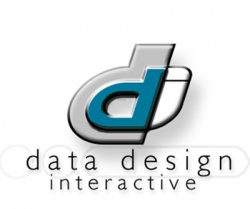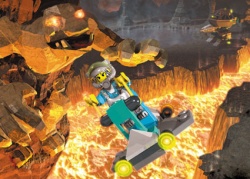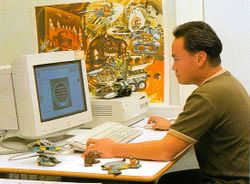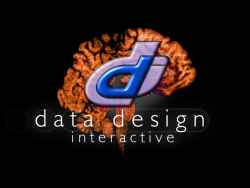Difference between revisions of "Data Design Interactive"
Jessietail (talk | contribs) |
Jessietail (talk | contribs) |
||
| Line 45: | Line 45: | ||
<!-- | <!-- | ||
==Developing The Game== | ==Developing The Game== | ||
After a number of optimizations to the engine and the HUD, the game was finally released on November 15, 1999. | |||
http://www.hiseman.com/media/releases/ddi/ddi150210.htm | http://www.hiseman.com/media/releases/ddi/ddi150210.htm | ||
[http://www.awn.com/mag/issue5.11/5.11pages/younghusbandartworld.php3 here]'' | |||
--> | --> | ||
Revision as of 17:00, 22 October 2017
![]()
This article is an unfinished work in progress or contains transferred information that needs to be rewritten or reformatted to fit our standards. Please excuse the mess and do not mark for deletion.
We are looking forward to the future, it looks very bright!—Stewart Green, CEO, c. 2014
Data Design Interactive Ltd was a British video game developer and publisher. The company was founded by in 1983 as Data Design Systems in Halesowen England, acquired by Stewart Green's Green Solutions in May 1990, and incorporated as limited company on 2 August 1999. The opening of a United States office in Sarasota, Florida, Data Design Interactive LLC, was announced on May 23, 2008.[1][2] Due to insolvency, the original United Kingdom office ceased trading in 2009 and was eventually dissolved on August 24, 2012.[3]
History
Early years
Work with LEGO and creation of Artworld
After the release of Conquest Earth, the newly-formed LEGO Media International approached Data Design Interactive in 1997 to work on LEGO Chess and LEGO Rock Raiders. For LEGO Chess, the company's art team animated FMV sequences for the game's opening, and for the opening and closing of each story match, based on scripts by producer Dave Upchurch; Krisalis Software worked on the actual game.[4] For LEGO Rock Raiders, art director Robert Dorney set up sister company Artworld UK (later Artworld Animation) to work on both pre-rendered FMV sequences and in-game models and animations. Twelve artists worked on LEGO Rock Raiders, using NewTek's LightWave 3D to create models and animations, and Adobe Photoshop and Kai's Power Tools to create textures that kept true to the look and feel of real LEGO bricks.[5] Artworld went on to create FMV animations for LEGO Racers, LEGOLAND, LEGO Alpha Team, LEGO Creator: Knight's Kingdom, Rocket Racers, LEGO Creator: Harry Potter, LEGO Racers 2, and Creator: Harry Potter and the Chamber of Secrets.[6][1] Artworld also continued to work with LEGO to create animations for commercials, renders for the LEGO Adventures! magazine, and designs for some LEGO sets.
Data Design Interactive worked closely with the LEGO Futura office in Billund, Denmark to design LEGO Rock Raiders sets alongside development of the video game,[7] making this the first LEGO video game not based off already-existing themes or completely original concepts. Design of the sets took eight months to complete.[8]
Later years
At some point prior to 2014, the United States office moved to Osprey, Florida.
Notes
- 1.^ Games not named in citation are from checking their credits for Artworld's involvement.
References
- ↑ GamesIndustry International (23 May 2008). "Data Design Interactive opens US office". Eurogamer. Retrieved 21 October 2017. Archive from 26 May 2008.
- ↑ Jenkins, David (27 May 2008). "Data Design Interactive Opens U.S. Office". Gamasutra. UBM TechWeb. Retrieved 21 October 2017. Archive from 12 May 2012.
- ↑ Insolvency for DATA DESIGN INTERACTIVE LIMITED (03817591). Companies House. Retrieved 21 October 2017.
- ↑ Upchurch, David (March 2000). "LEGO Chess (PC)". Retrieved 21 October 2017. Archive from 23 August 2017.
- ↑ Moltenbrey, Karen (March 2000). "Legos Come to Life". Computer Graphics World. Volume 23. Issue 3. Retrieved 21 October 2017.
- ↑ Younghusband, Paul (1 February 2001). "A One Stop Digital Shop: Data Design Interactive and Artworld UK". Animation World Magazine. Issue 5.11, p. 19-21. Animation World Network. Retrieved 21 October 2017.
- ↑ "Behind the Scenes: Rock Raiders". LEGO Adventures! Issue 7, October 1999, p. 30-33. Egmont Fleetway Ltd, Egmont House.
- ↑ "The Design Concept". The Ultimate LEGO Book. Dorling Kindersley, 1999, p. 30-33.
External links
- DDI Games, currently under construction




